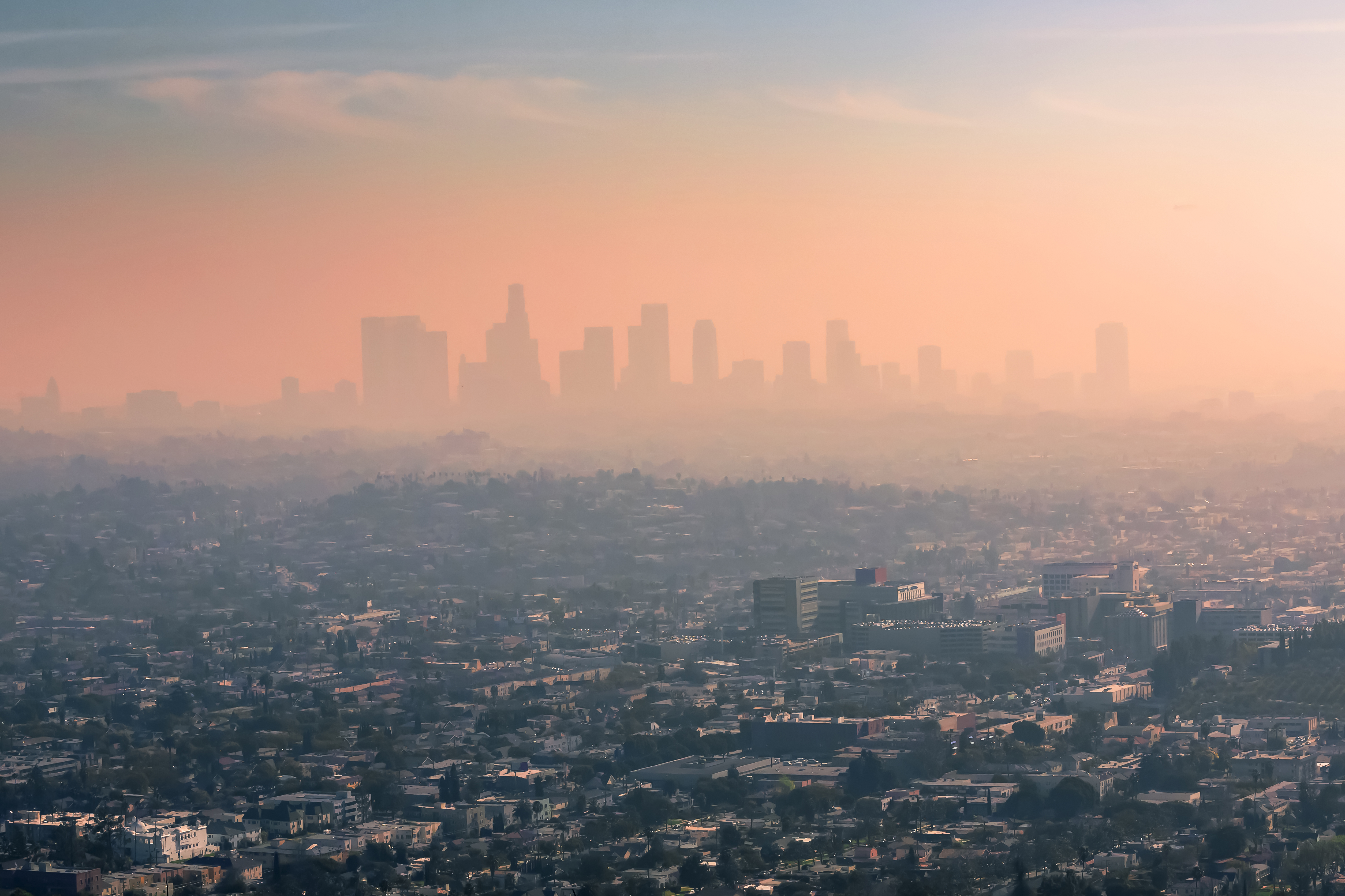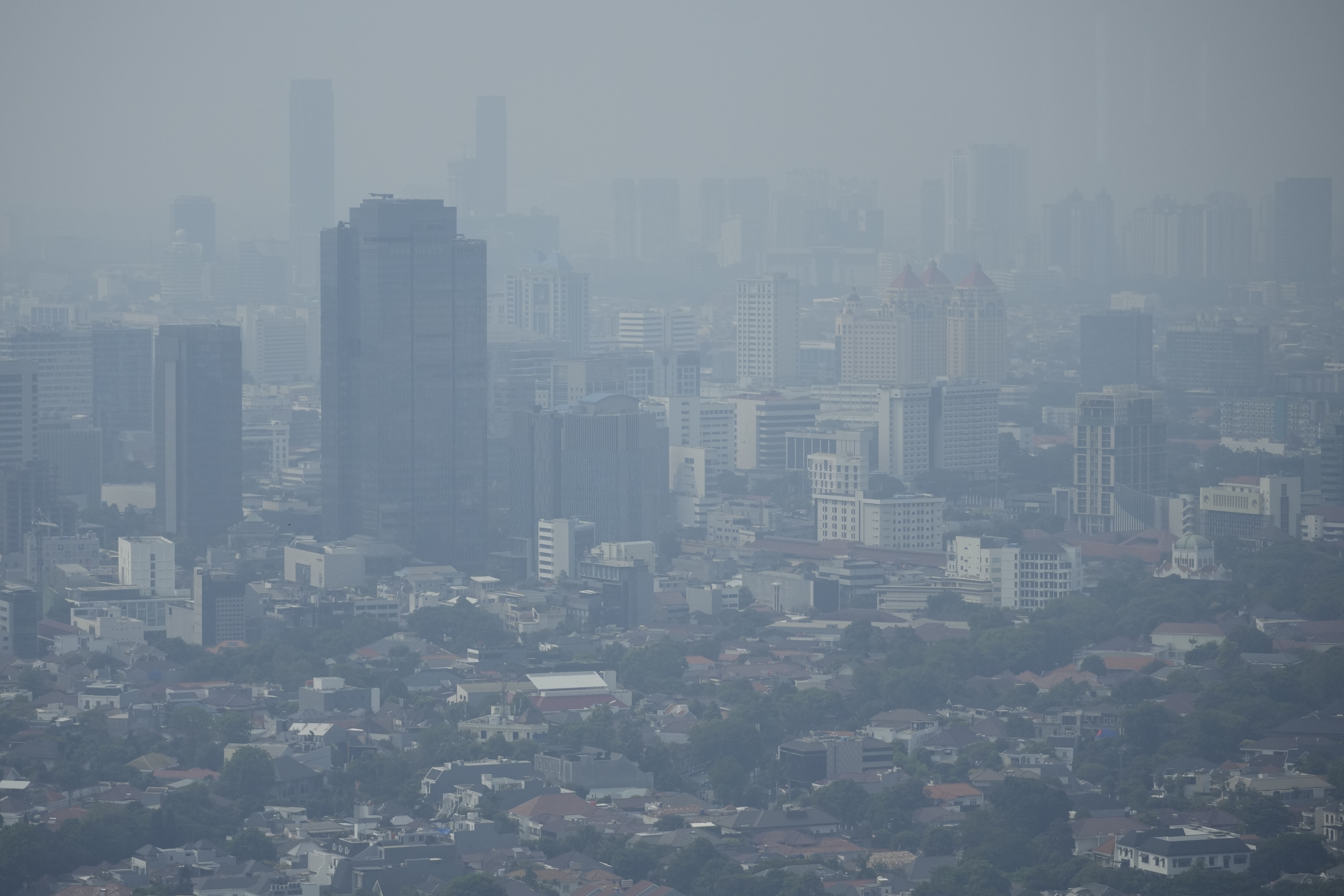Efforts by the Biden administration to limit pollution from automobile tailpipes — a major source of planet-warming emissions — face a crucial test as legal challenges brought by Republican-led states head to a federal appeals court.
The U.S. Court of Appeals for the District of Columbia Circuit will hear arguments Thursday and Friday on three cases challenging Biden administration rules targeting cars and trucks. Transportation is the largest source of greenhouse gas emissions that contribute to global warming, and the legal cases could go all the way to the Supreme Court.
Republican attorneys general say the legal challenges are needed to curtail government overreach, while environmental groups and the Democratic administration say an adverse ruling could jeopardize protections against deadly pollution that contributes to climate change.
The cases before the appeals court will test a 2021 Environmental Protection Agency rule that strengthened tailpipe pollution limits and a 2022 EPA decision that restored California’s authority to set its own tailpipe pollution standards for cars and SUVs. At least 15 states and the District of Columbia have signed on to California’s vehicle standards, which are stricter than federal rules and are designed to address the state’s severe air pollution problems. Seven of the 10 U.S. cities with the worst ozone pollution are in California.
We've got the news you need to know to start your day. Sign up for the First & 4Most morning newsletter — delivered to your inbox daily. Sign up here.
A third case challenges mileage standards set by the National Highway Transportation Safety Administration.
Texas Attorney General Ken Paxton is leading a coalition of GOP-leaning states and oil industry groups that are challenging the tailpipe rule.
“At a time when American gas prices are skyrocketing at the pump, and the Russia-Ukraine conflict shows again the absolute need for energy independence, (President Joe) Biden chooses to go to war against fossil fuels,” said Paxton, who faces an impeachment trial in the Texas Senate on unrelated charges of corruption and bribery.
He said the rules will disadvantage Texas and other oil- and gas-producing states.
Ohio Attorney General Dave Yost, who is leading a separate case challenging the California standards, said the waiver was a delegation of federal authority to a state — and an improper one at that.
“This is not the United States of California," Yost said. “To the extent that national standards are necessary, they should be set by the federal government.”
But Peter Zalzal, a senior attorney for the Environmental Defense Fund, an advocacy group that is involved in two of the legal cases, said the rules were “lawful, constitutional and vital.”
The Natural Resources Defense Council, another environmental group, called the legal challenges “an unprecedented attack” on federal clean-air standards by the oil industry and Republican-led states.
“The fossil fuel industry and its allies want to kneecap the EPA and NHTSA so that the next round of clean car standards cannot achieve the carbon pollution reductions needed to address the climate crisis,″ NRDC lawyer Pete Huffman wrote in a memo this week.
A spokesman for the EPA declined to comment, citing ongoing litigation.
But Todd Kim, assistant attorney general for the Justice Department's Environment and Natural Resources Division, said in a legal filing that the EPA acted well within its authority to regulate tailpipe pollution.
The court cases come as the Biden administration pushes the auto industry to quickly adopt electric vehicles as part of its climate agenda. The 2021 infrastructure law and 2022 climate law include billions in incentives for purchase of new and used EVs and a national network of new charging stations. Fully electric vehicles represent just 6.7% of new vehicle sales in the U.S., but analysts expect that to rise rapidly in coming years. Major automakers, including General Motors and Ford, have pledged full commitment to EVs, and GM has said it will end sale of new gasoline-fueled passenger vehicles by 2035.
The Alliance for Automotive Innovation, which represents companies that make 98% of the new cars sold in the U.S., said in a court filing that EPA’s tailpipe rule for model years through 2026 “will challenge the industry.″ But it said EPA designed the rule “to balance overall stringency with critically important flexibilities” that allow carmakers to use a range of pollution controls while also adopting EV technology.
“Reducing (greenhouse gas) emissions from all sectors of the U.S. economy is a national priority,″ the group wrote. “The members of Auto Innovators are committed to doing their part.″
The Justice Department disputed a claim that the tailpipe rule falls under the so-called “major questions” doctrine cited by the Supreme Court in a landmark ruling that limited how the EPA can regulate carbon dioxide emissions from power plants. The court's June 2022 ruling in West Virginia v. EPA held that Congress must speak with specificity when it wants to give an agency authority to regulate on an issue of major national significance.
“Far from doing something unexpected or novel'' in the tailpipe pollution rule, "EPA merely tightened existing standards,'' Kim wrote. In doing so, EPA was "using the same regulatory approach that it has used in every vehicle greenhouse-gas rule,'' he said.
In a separate filing, Kim said Ohio's complaint that the California waiver was illegal is “unsupported by text, history or precedent.”
Ohio and other states don’t have standing to challenge the California waiver because they are not regulated by the waiver, Kim said.
Zalzal, the EDF attorney, called Ohio's challenge ironic, noting that the state is not seeking the right to set its own standards. "They just want to deny California’s traditional authority as guaranteed by federal law for more than 50 years,'' he said.



